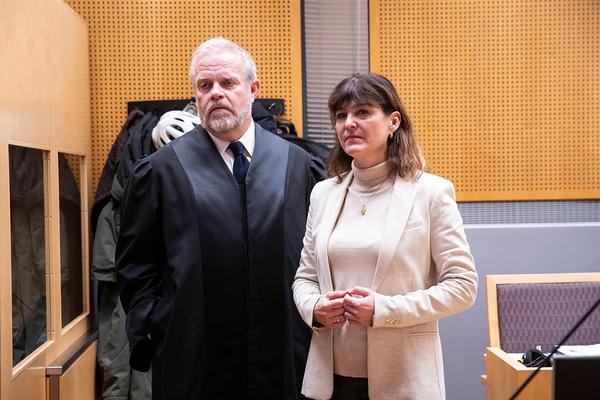27. mai 2015
Follow the user

— Digital news media and the next big shift. In May last year, the Guardian passed a significant milestone. For the first time […]
— Digital news media and the next big shift.
In May last year, the Guardian passed a significant milestone. For the first time in our history on the web, over half of our traffic came from a mobile device or tablet.
We are not alone in this; across the industry, the data shows that almost all digital media organisations have now crossed The Rubicon, and the figures are moving only in one direction.
The birth of digital at the end of the last century transformed the news industry, unlocking enormous opportunities for those organisations that adapted (and punishing those that did not). The shift from desktop to mobile signals another step change, challenging once again all the assumptions on which the previous model was based.
So what do we call this new normal? Five years ago, we went ‘digital-first’. Does this mean we are ‘mobile-first’ now?
Maybe such labels are no longer useful. In the face of ceaseless change and disruption – of which the shift to mobile is only one element – trying to predict ‘the future of media’ might be unhelpful, not to say impossible. Who, even ten years ago, could have predicted the impact of the smartphone?
Some things I think we can say. There is no doubt, for instance, that off-platform audiences will become increasingly important for publishers.
Contrary to fears of “filter bubbles”, a recent study (How Millennials Get News, 2015) found that Millenials using Facebook encounter a wide, diverse range of news sources and editorial viewpoints – and the ability to like, share and comment helps them engage them closely with stories.
At the Guardian, we are well aware of Facebook’s potential. Referrals from the network are up 185% year-on-year, with social media in general currently driving a quarter of our total traffic. Our journalism appears over 30 million times every day on news feeds, constantly exposing our brand to new audiences that might not typically engage with the Guardian.
If publishers start sending their content straight to Facebook, will we still be publishers or just “content-creators”?
TANYA CORDREY
Our lively Facebook community of 4.3 million people attracts over 1 million comments a month and 100,000 likes, opening up an invaluable conversation with our readers. Not to mention the growing reach of our embedded video player, or the huge opportunities of YouTube.
No-one working in digital news could fail to be excited by this.
Nevertheless, it also forces us to consider serious questions about our industry and ourselves. Are the social networks on which our traffic increasingly depends simply platforms, or should we start to think of them as publishers too – with all the attendant editorial responsibilities? And if, as has been proposed, publishers start sending their content straight to Facebook, will we still be publishers or just ‘content-creators’? Does it matter? These are big questions, which I cannot promise to answer today.
The second major trend, to which I have already briefly alluded, is the shift to mobile. This has huge implications for the way we think about content, because it signals not simply a change in platform, but a fundamental shift in consumer behaviour.
What do we know about mobile users? First off, we know that they use fewer news sources. Indeed, a recent study (Digital News Report, Reuters Institute, 2014) found that 55% of mobile users in the UK use only one source – which means competition for readers is going to become fiercer.
We know they spent a much lower proportion of their time on browsers – just 12% in one recent estimate (The U.S. Mobile App Report, comScore, 2014). This means that search is a less significant mode of discovery. To illustrate this point, consider that Facebook has already overtaken Google as the Guardian’s main referral source on mobile.
We know that app users are loyal, and valuable. Users of the Guardian app account for over one quarter of total page views, with more than 1 million unique browsers through our apps every week, despite making up just 5% of total visitors. With the rise of HTML5 a few years ago, we debated the need to even have an app, especially in light of our decision to make the Guardian website responsive. Today we are thankful that we made that decision – our app users have almost doubled in the past twelve months, and we can see a direct increase in loyalty and engagement when our users move to using the app.
We know that smartphone users check their devices more than desktop users; over 200 times a day, if you choose to believe a survey published last year (Smartphone usage in the UK’, Tecmark, 2014). Moreover, where desktop traffic to news sites tends to conform to working patterns, mobile habits are altogether more complex and variegated. Typical mobile users might start their day with a quick glance at the headlines, save in-depth articles for the commute home, and catch up on lifestyle content at the weekend. The days of a predictable lunchtime and teatime surge are behind us. So what, then, lies ahead of us?
It goes without saying that our publishing model must now be continuous and 24/7. Having a global audience and newsrooms on three continents helped the Guardian adapt to this quite early. The challenge now is to evolve that fluidity and flexibility so that we are providing the right content, in the right place, at the right time.
In other words, we need to be following our users wherever they are – whether that’s on our platform or off our platform; on the commute or on the couch; Sunday morning or Wednesday lunchtime; in New York or Addis Ababa. The market is fragmenting and we all need to understand the implications. Many new nimble competitors are emerging – each one concentrating on just one small element of what used to be considered the total newspaper proposition.
The Guardian was quick to adapt to digital – it is why we are now the second largest quality English language newspaper site in the world, where just ten years ago we were only the ninth largest newspaper in Britain.
The scale of this transformation is testament to the incredible gains to be had from embracing disruption. It is also a warning that we stand still at our own peril.
Tanya Cordrey is Chief Digital Officer at Guardian News & Media, heading up the organisation’s 150 person strong product, engineering, data and analytics teams.



